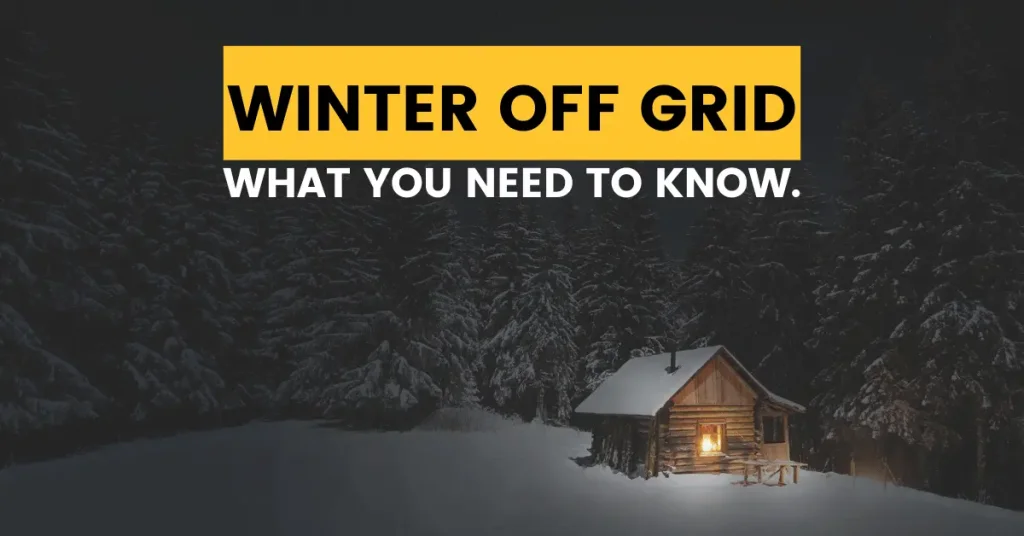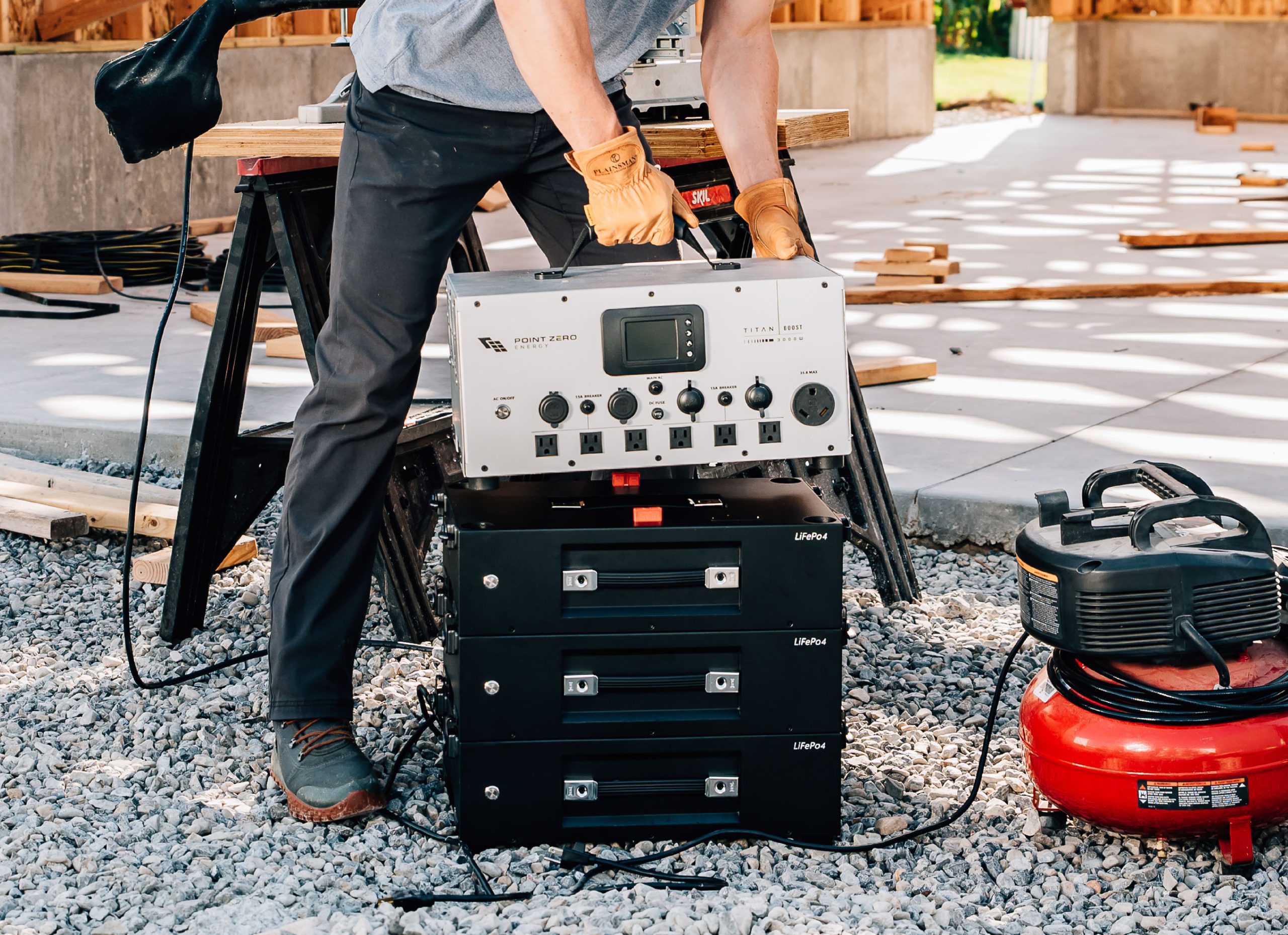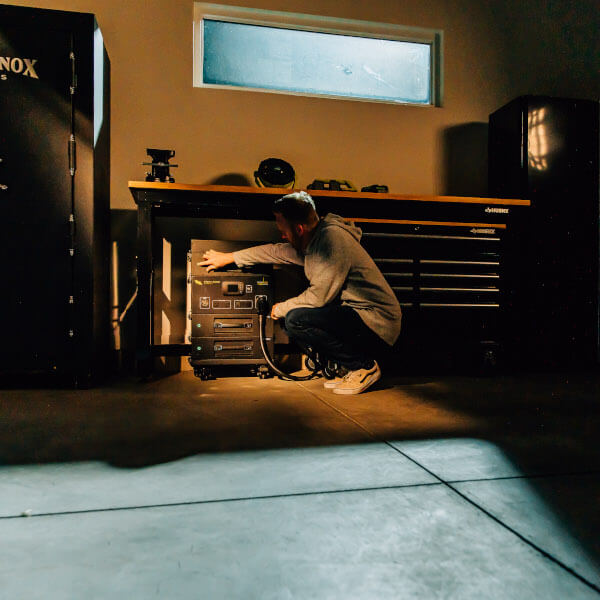Winter can be a challenging time for those who rely on off-grid power solutions, such as solar power and portable generators. With shorter days and longer nights, it can be difficult to generate and store enough energy to keep your home or cabin powered through the winter months. But with the right equipment and a little bit of planning, you can stay comfortable and connected even in the depths of winter. Here are a few things you need to know if you are living off grid during the winter.

One of the key considerations for off-grid power in the winter is having enough solar panels to generate the electricity you need. To figure out how many solar panels you need, you need to know three things:
Using this information will give you an estimate for the number of solar panels needed to meet your power requirements. Let’s dive in!
(1) How much power you use in a year. To estimate the amount of power you need your solar panels to produce, you can start by looking at your usage, which is listed in kilowatt-hours (kWh) on your power bill. If you aren’t able to find it on your power bill, just give your power company a call and they can help! You want to find your annual kWh usage.
When planning your off-grid solar panel system, it’s also important to consider how your energy needs may change in the future. Could you possibly be buying a larger home? Adding a hot tub? Adding more children? Charging an electric vehicle? It’s important to keep these potential changes in mind and plan your solar panel system accordingly. Let’s assume an annual usage of 10,000 kWh for this exercise!
(2) How much power you want to produce. You also need to consider your production goal from your solar power system. Is it 80% of your power needs? 50%? 25%? All of it? One of the most common recommendations is to aim for producing for on grid homes is around 80% of your current power usage with solar power. This can help ensure that you’re meeting most of your energy needs while also being mindful of the costs and space needed for a solar panel system. For off grid homes, it is important to produce more power than you need in order to ensure that you have a reliable and consistent source of electricity. For this scenario, let’s assume you want 115% of your power production.
(3)The wattage of each solar panel. Lastly, consider the solar panels and their wattage. Panel wattage, also referred to as a solar panel’s power rating, is a measure of a solar panel’s electricity output under optimal conditions. It is measured in watts (W) and for the purpose of this example, let’s assume it is 200W. I am using 200W to match our 200W Rigid Solar Panel.
Let’s do the math!
Number of solar panels = (annual power usage x production goal) / 1.3*/ panel wattage
Number of solar panels = (10,000 x 115%) / 1.3 / 200 = 44.2 solar panels.
*Note: A solar panel system’s production ratio tells you how much energy the system is producing compared to its size. It is found by dividing the amount of energy produced (kWh) by the size of the system (W). This number is not always 1:1 because it depends on how much sunlight the system gets, which varies based on location. In the US, production ratios typically range between 1.3 and 1.6. This means you can use 1.3 or 1.6 as a high or low estimate when making calculations.

When it comes to maximizing the amount of sunlight your solar panels receive, proper placement and orientation is key. Portable solar power systems are a great option for this, as they can be easily moved and adjusted to maximize the amount of sunlight they receive. In general, solar panels should be placed in an area that receives the most direct sunlight throughout the day. This is typically a south-facing location, as the sun is in the northern hemisphere for most of the day during the winter months.
However, it’s not always possible to have a south-facing location for your solar panels, and in these cases, adjustments can be made to optimize sunlight exposure. One option is to use a solar panel mounting system that allows for the panels to be adjusted and tilted to face the sun directly. This can increase the amount of sunlight that the panels receive by up to 25%.
Additionally, it’s important to keep the solar panels clean, as dirt, debris and snow can block sunlight and reduce the panels’ efficiency. This can be done by wiping down the panels with a damp cloth or soft broom.
Another important factor to consider is battery storage. In the winter, it’s especially important to have a reliable battery system to store the power you generate during the day so that you can use it at night. Deep-cycle lead-acid batteries are a good choice for off-grid power systems, as they are durable and can be easily replaced. However, Lithium-ion batteries are becoming a more popular option for their longer lifespan and higher energy density.
The Point Zero Energy Titan uses a 2000W Lithium-ion battery that is removable and expandable. This innovative approach will give you greater portability and flexibility in what you can power with your solar generator. By simply adding more battery packs you can expand or replace your batteries quickly and easily.

When living off-grid, it’s especially important to use energy efficiently in order to minimize the amount of power you need to generate. There are several steps you can take to improve energy efficiency in your home or cabin. One effective method is to add insulation to your walls, floors, and attic. This will help to keep heat inside your home during the winter, reducing the amount of energy you need to use for heating.
Another important step is to seal any drafts around windows and doors. This will prevent cold air from entering your home and hot air from escaping, further reducing the amount of energy you need to use for heating.
In terms of appliances, using energy-efficient models can make a big difference in your overall energy usage. Look for appliances that have the Energy Star label, as these have been independently certified to be energy efficient. Additionally, you should use appliances in an efficient way. For example, using an air fryer instead of a stove, using natural lighting instead of lamps and turning off the lights when you leave a room.
Before winter sets in, we highly recommend doing a DIY Home Energy Audit. A DIY Home Energy Audit is a great way to identify areas in your home where energy is being wasted and to come up with a plan to address those areas. This will help you understand how much energy you are using and where you can make improvements.
Off-grid living in the winter can be challenging, but it is not impossible. By having enough solar panels, a reliable battery storage and being mindful about energy usage, off-grid winter living can be comfortable, warm and enjoyable. With the right equipment and planning, you can stay comfortable and connected, even in the coldest months of the year.

